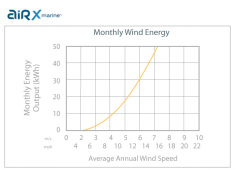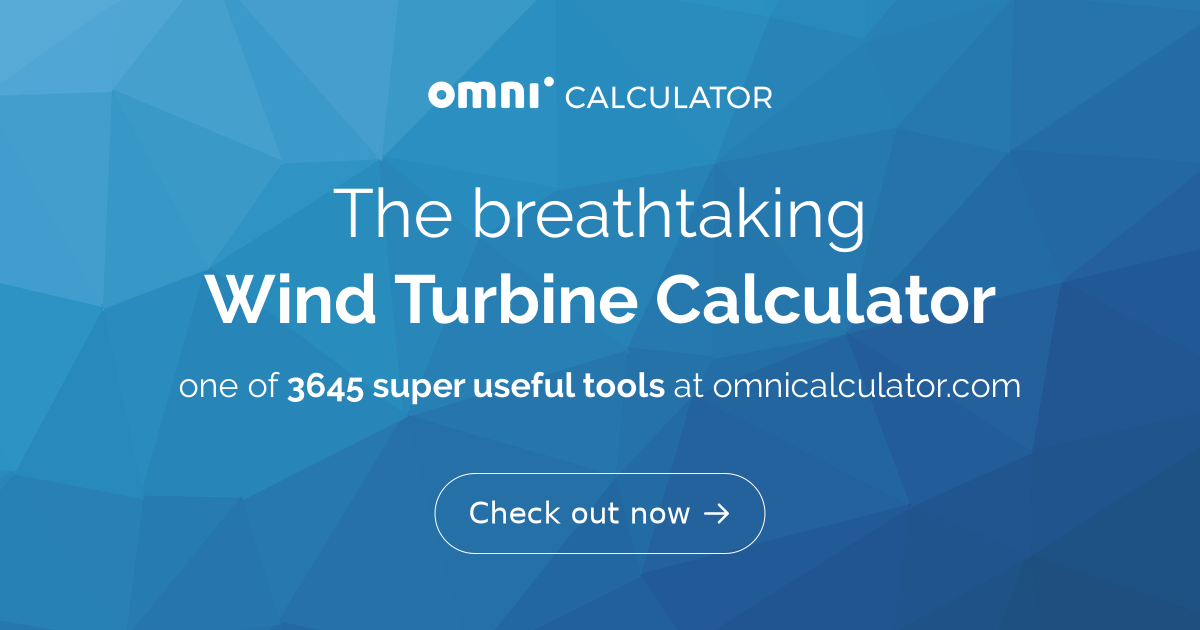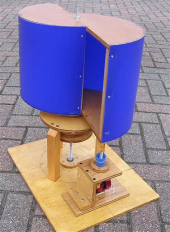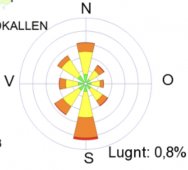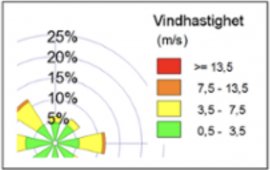For example, from what diamater do the physics start to give hope? We are investing alot in wind parks after all so there must be some kind of a tipping point.
Of course - which is why I deliberately stated 'small wind turbines'. Wind makes sense on large scale, large turbines purely because it is the only variable you control in the formula. Let's do the math:
P = 1/2 x ρ x A x V³
Let's assume we have a constant 10mph (4.5 m/s, 16km/h) wind. The average in Sweden is 7 to 8 mph.
First, let's take a 'small' wind turbine with a blade length of 2 meters, swept area becomes r² x pi = 12.5 m². Putting the numbers in the formula this gives:
P = 1/2 x 1.2 x 12.5 x 4.5^3 = 683.5W -> this is the theoretical available wind power.
Now, from your link we can see that the actual efficiency μ is somewhere in the region of 30%. In every case, even a magical turbine, gives you an absolute maximum efficiency of 59.3% - the Betz limit. Let's assume we have the highest real efficiency of the very best turbines - 40%.
This means that our small turbine has a maximum output of around 274W.
Let's double the blade length to 4m. Thanks to the exponential in the area calculation, we get a swept area of 50m². Keeping everything else the same, we get a theoretical max power of 2734W, and a realistic output of 1100W. So, by doubling the blade length, we get a 4x power increase.
Now let's increase the wind speed slightly. Assume we have a decent pole to put it on, and put it where we get a 15mph wind (6.7m/s, 24km/h). For our small turbine, we now get a theoretical power output of 2256W, or 902W realistic. For our larger turbine, we get a theoretical power of 9023W, or 3609W realistic. So by just having an additional 2m/s wind speed, we increase the output by a factor of 3.
Now, to put this into perspective: one of the smallest commercial wind turbines you can get today has a blade length of 7.5 meters. A typical 1MW turbine sits around a blade length of 30 meters.



